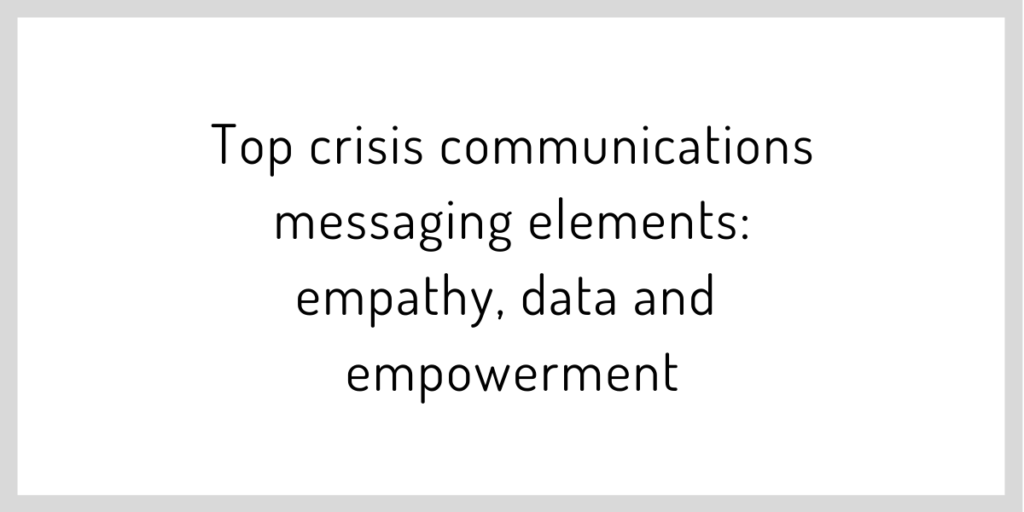
Adversity is a fire that refines us as it burns. Despite the heat, you and I sometimes willingly step into it. Why? Because we know many of life’s greatest achievements follow adversity. Unfortunately, there are times we're thrown into the fire — responding based upon habits or, better yet, with foresight and a crisis communication plan.
Responses during a crisis can be as varied as the situations and humans involved. However, well-managed crises share commonalities. Keeping a crisis communications plan as manageable, yet as adaptable as possible, here are eight Ts to consider.
It's never too late to make time for what's most important to your organization and your customers. It's worth the time to think about how you'll safeguard your brand. In the absence of safeguarding your brand, you leave it to chance. Developing a crisis communications plan that’s manageable and adaptable can guide you when tomorrow’s "what if" moments arrive today.
Gather your planning team every three to six months to talk through potential crises. Do a deep-dive planning session at least once a year.
Crises rarely remain static. As they evolve, you must be ready to adapt. Thankfully, many crises are visible from a distance. You'll have some time to assess the building tension and prioritize a response. If you address a tension point before it becomes a full-blown crisis, you have an opportunity to defuse or diminish the tension. If you ignore a tension point, it could devastate your brand and the well-being of those around you.
For an example, review the tension scale below. Then, build your own, based upon your unique brand needs. Dividing the scale into three or five phases lets you organize how you'll adjust your resources for various situations.
Click here to download a sample tension scale.

When categorizing crises, you might work your way from the inside and then outward. For instance, select categories such as organizational, community, industry-related and environmental. Or, come up with your own categories based on the patterns of your brand's unique, potential crises.
Brainstorming specific tensions and crises can take a while. Therefore, it helps to walk through a few layers of thought to capture as many of these as quickly as possible. The first layer of thought should stem from topics within your brand's operational and human resources policies and procedures. The second layer reflects Maslow's Hierarchy of Needs. The third layer is audience-specific.
Maslow's Hierarchy of Needs groups our human needs according to these sequential levels:
Round out this step by considering your audience groups' unique responses to elements within these levels.
If you value agility, your core crisis communication team should be a small group of key decision makers. However, it's essential to identify an extended crisis communications team for various possible situations. Your brand's thought leaders should be involved in and aware of planning for tensions and potential crises that relate to their specialty area. Furthermore, key external contacts should be well informed and prepared for potential crises impacting their roles.
Plan ahead for the tools and technology you'll need for the various scenarios. Tools could include items such as safety gear or repair supplies. Although a widespread virus was likely on many crisis communications plans, the improbability of it happening, until recent months, likely stunted gathering the necessary supplies in advance. Even if you can't obtain or store the supplies you need right away, generate relationships with experts outside of your organization who can. Prioritize these relationships according to distance, starting with local and regional contacts.
Preparing messaging templates in advance provides a thoughtful starting point that speeds up your response time. By incorporating flexible blanks to fill in later, you can create consistency around how you approach messaging.

After decades of refining crisis communications, I've noticed three messaging elements that resonate strongly with audiences, in this order: empathy, data and empowerment. Empathy acknowledges the emotions arising from the tension or crisis. Data involves sharing relevant information or results regarding the situation that's been cleared through legal protocols. Thirdly, empowerment allows others to join your organization in working through the situation. This could be as simple as encouraging others to contact local legislators about the issue.
As a next step, create fill-in-the-blank messaging templates for each of your primary media (e.g. fact sheet, web page, email update, social media post, media release). Always begin with a confidential, in-house fact sheet before using any other template. Appoint an editorial and approval team that will review future messaging prior to distribution.
Promptly enacting a crisis response, which includes the messaging, is critical. If you're not promptly directing your brand story, someone else will.
Click here to download a starter messaging template.
Select physical and digital spaces where your core crisis communication team will gather in times of crisis. Sometimes it's best to be closer to the scene of a crisis. Other times you may need secondary locations for the team's safety. Think wisely about how you'll securely access your crisis communication plan, potential supplies, up-to-date information and each other within these physical and digital spaces.
Lastly, conduct some scenario tests on paper to gauge process fluidity and response times. More challenging crisis scenarios should be tested through a mock or role-play crisis with full access to resources and outside assistance.
In closing, human beings tend to make decisions based on values, experiences and habits. Having a crisis communication plan in place empowers your team to take a quick step back and frame decisions more thoughtfully. As you dive into this process for your brand, the eight Ts provide a refined framework toward confidence and preparation.